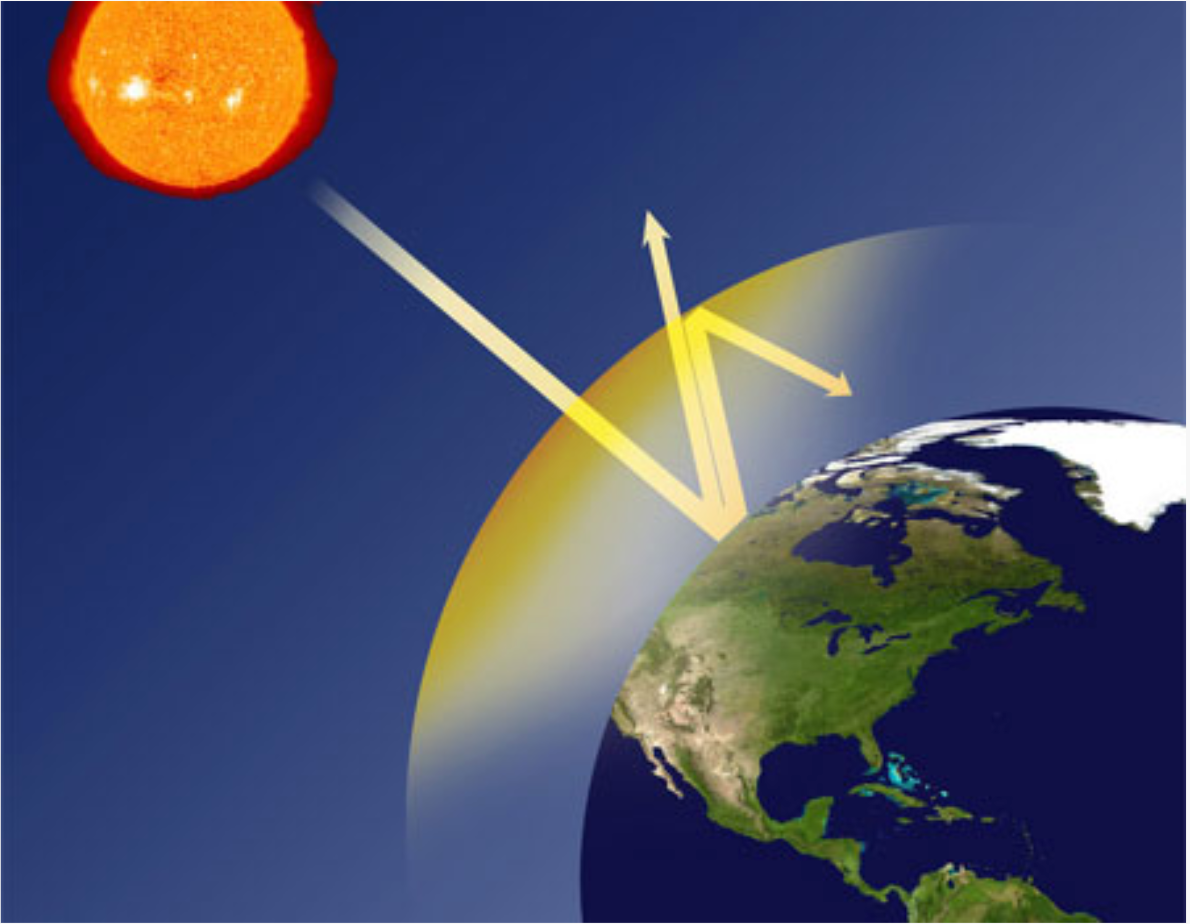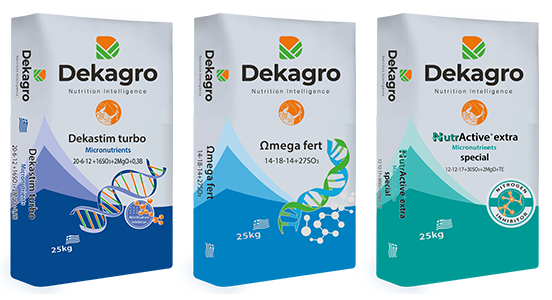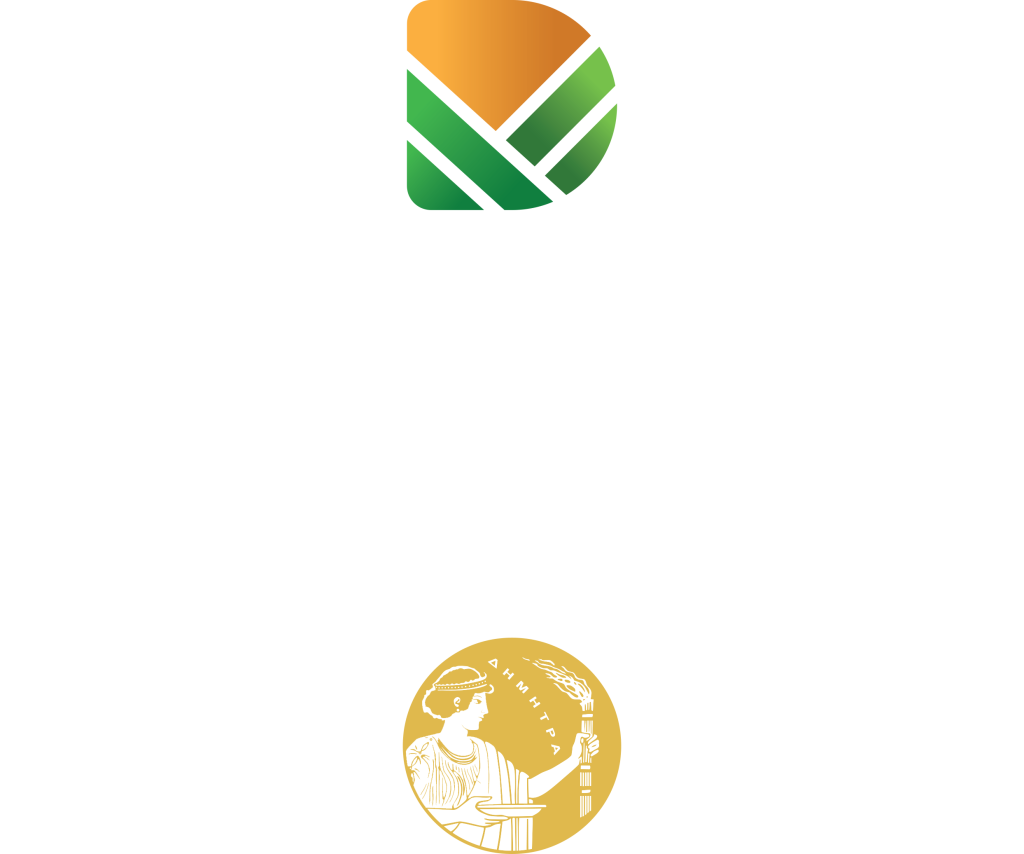Carbon footprint
Carbon footprint


For the past few years, the term greenhouse effect has been linked to an increase of the average temperature of the Earth’s surface, which leads to climate change.
The planet gets gradually warmer, the sea level keeps rising due to the polar ice caps melting, and extreme weather phenomena become more and more common in various areas.
These changes have grave consequences on the integrity of ecosystems, weather resources, availability of food, industry, crops, transports, and infrastructure.
Human activity exacerbates the greenhouse effect, contributes to an increased concentration of greenhouse gases in the atmosphere, and is the main source of this gradual climate change.
Greenhouse gases are gases in the atmosphere which, due to their particular characteristics, absorb and emit radiation in the earth’s atmosphere, warming the Earth’s surface.
- ● Carbon dioxide (CO2): the main greenhouse gas. One of the main sources for CO2 in the atmosphere is fossil fuel combustion – coal, petroleum, and natural gas.
- ● Methane (CH4): second only to CO2. It is mainly generated through stock-farming.
- ● Nitrous oxide (N2O): it contributes at about 5% to the greenhouse effect. It is mainly generated by nitrogen fertilizers, fossil fuel combustion, and some industrial processes.
- ● Hydrofluorocarbons (HFCs), Perfluorocarbons (PFCs) and Sulfur hexafluoride (SF6): these are artificial gases, whose contribution to the greenhouse effect by mass unit is a hundred times greater than that of carbon dioxide. άνθρακα.
In an effort to put an end to global warming, the majority of the developed countries have agreed to take measures in order to reduce their emissions of greenhouse gases.
One of the most significant measures is reducing the Carbon footprint of products.

The carbon footprint is the total amount of greenhouse gases, as a commensurable quantity of carbon dioxide, emitted during the life cycle of a product or caused by a given population or system or activity.
Based on the above definition, the carbon footprint of a fertilizer is tantamount to the carbon dioxide emitted during the production of one ton of fertilizer. It is an international term, and an accurate and useful indicator of the effect fertilizers have on climate change. The smaller the carbon footprint, the less harm is caused by the fertilizer to the environment.
The carbon footprint is a powerful “tool” so as to understand and reduce the effects each product used by people has on the phenomenon of global warming.
The need to protect the environment and people’s awareness of climate change have resulted in a new, strong demand for production processes with lower emissions of greenhouse gases.
The products made by a company, which calculates and then takes action to reduce the carbon footprint, include a series of benefits for both the company and the consumer.

Benefits for the companies:
- ● Contributing to the fight against climate change, with less emissions of greenhouse gases and a “green” social responsibility towards their customers.
- ● Reduced production costs due to the application of energy saving practices, reduced inputs, and minimization of the production of waste.
- ● Covering an ever-growing need of the market to inform the public on the environmental impact of food items.
- ● Production boost of products which are friendly to the environment.
Benefits for the consumer:
Measuring and recording greenhouse gas emissions and calculating the carbon footprint of a product allows a consumer to:
- ● To select a product which actually contributes to the fight against climate change.
- ● To acknowledge the low carbon footprint of a product as a competitive advantage against other similar products.
- ● To promote general benefits to the environment by highlighting the use of products with the lowest possible carbon footprint.

Hellagrolip has developed techniques which reduce the emitted quantity of carbon dioxide during the production of its fertilizers, reducing the carbon footprint of each individual product.
All the Nitrogen and compound fertilizers produced by Hellagrolip have a significantly lower footprint to the European average, while many of its products are among the fertilizers with the lowest carbon footprint in Europe.
Thus, Hellagrolip SA brings added quality to its products, ensures multiple benefits for agriculture and the environment, and gives a significant advantage to any person using its fertilizers.
In this way, Dekagro gives added value to its products and ensures multiple benefits for agriculture and the environment.
Contact us!
- For any questions about the products and their use, please free to contact us.
- Tel. : +30 213 003 7600
- Mail : [email protected]
Carbon footprint

For the past few years, the term greenhouse effect has been linked to an increase of the average temperature of the Earth’s surface, which leads to climate change.
The planet gets gradually warmer, the sea level keeps rising due to the polar ice caps melting, and extreme weather phenomena become more and more common in various areas.
These changes have grave consequences on the integrity of ecosystems, weather resources, availability of food, industry, crops, transports, and infrastructure.
Human activity exacerbates the greenhouse effect, contributes to an increased concentration of greenhouse gases in the atmosphere, and is the main source of this gradual climate change.
Greenhouse gases are gases in the atmosphere which, due to their particular characteristics, absorb and emit radiation in the earth’s atmosphere, warming the Earth’s surface.
- ● Carbon dioxide (CO2): the main greenhouse gas. One of the main sources for CO2 in the atmosphere is fossil fuel combustion – coal, petroleum, and natural gas.
- ● Methane (CH4): second only to CO2. It is mainly generated through stock-farming.
- ● Nitrous oxide (N2O): it contributes at about 5% to the greenhouse effect. It is mainly generated by nitrogen fertilizers, fossil fuel combustion, and some industrial processes.
- ● Υδροφθοράνθρακες (HFCs), Υπερφθοράνθρακες (PFCs) και Εξαφθοριούχο θείο (SF6) (SF6): πρόκειται για τεχνητά αέρια των οποίων η συνεισφορά στο φαινόμενο του θερμοκηπίου, ανά μονάδα μάζας, είναι κατά εκατοντάδες φορές μεγαλύτερη από το διοξείδιο του άνθρακα.
In an effort to put an end to global warming, the majority of the developed countries have agreed to take measures in order to reduce their emissions of greenhouse gases.
One of the most significant measures is reducing the Carbon footprint of products.

The carbon footprint is the total amount of greenhouse gases, as a commensurable quantity of carbon dioxide, emitted during the life cycle of a product or caused by a given population or system or activity.
Based on the above definition, the carbon footprint of a fertilizer is tantamount to the carbon dioxide emitted during the production of one ton of fertilizer. It is an international term, and an accurate and useful indicator of the effect fertilizers have on climate change. The smaller the carbon footprint, the less harm is caused by the fertilizer to the environment.
The carbon footprint is a powerful “tool” so as to understand and reduce the effects each product used by people has on the phenomenon of global warming.
The need to protect the environment and people’s awareness of climate change have resulted in a new, strong demand for production processes with lower emissions of greenhouse gases.
The products made by a company, which calculates and then takes action to reduce the carbon footprint, include a series of benefits for both the company and the consumer.

Benefits for the companies:
- Contributing to the fight against climate change, with less emissions of greenhouse gases and a “green” social responsibility towards their customers.
- Reduced production costs due to the application of energy saving practices, reduced inputs, and minimization of the production of waste.
- Covering an ever-growing need of the market to inform the public on the environmental impact of food items.
- Production boost of products which are friendly to the environment.
Benefits for the consumer:
Measuring and recording greenhouse gas emissions and calculating the carbon footprint of a product allows a consumer to:
- To select a product which actually contributes to the fight against climate change.
- To acknowledge the low carbon footprint of a product as a competitive advantage against other similar products.
- To promote general benefits to the environment by highlighting the use of products with the lowest possible carbon footprint.

Hellagrolip has developed techniques which reduce the emitted quantity of carbon dioxide during the production of its fertilizers, reducing the carbon footprint of each individual product.
All the Nitrogen and compound fertilizers produced by Hellagrolip have a significantly lower footprint to the European average, while many of its products are among the fertilizers with the lowest carbon footprint in Europe.
Thus, Hellagrolip SA brings added quality to its products, ensures multiple benefits for agriculture and the environment, and gives a significant advantage to any person using its fertilizers.
In this way, Dekagro gives added value to its products and ensures multiple benefits for agriculture and the environment.

